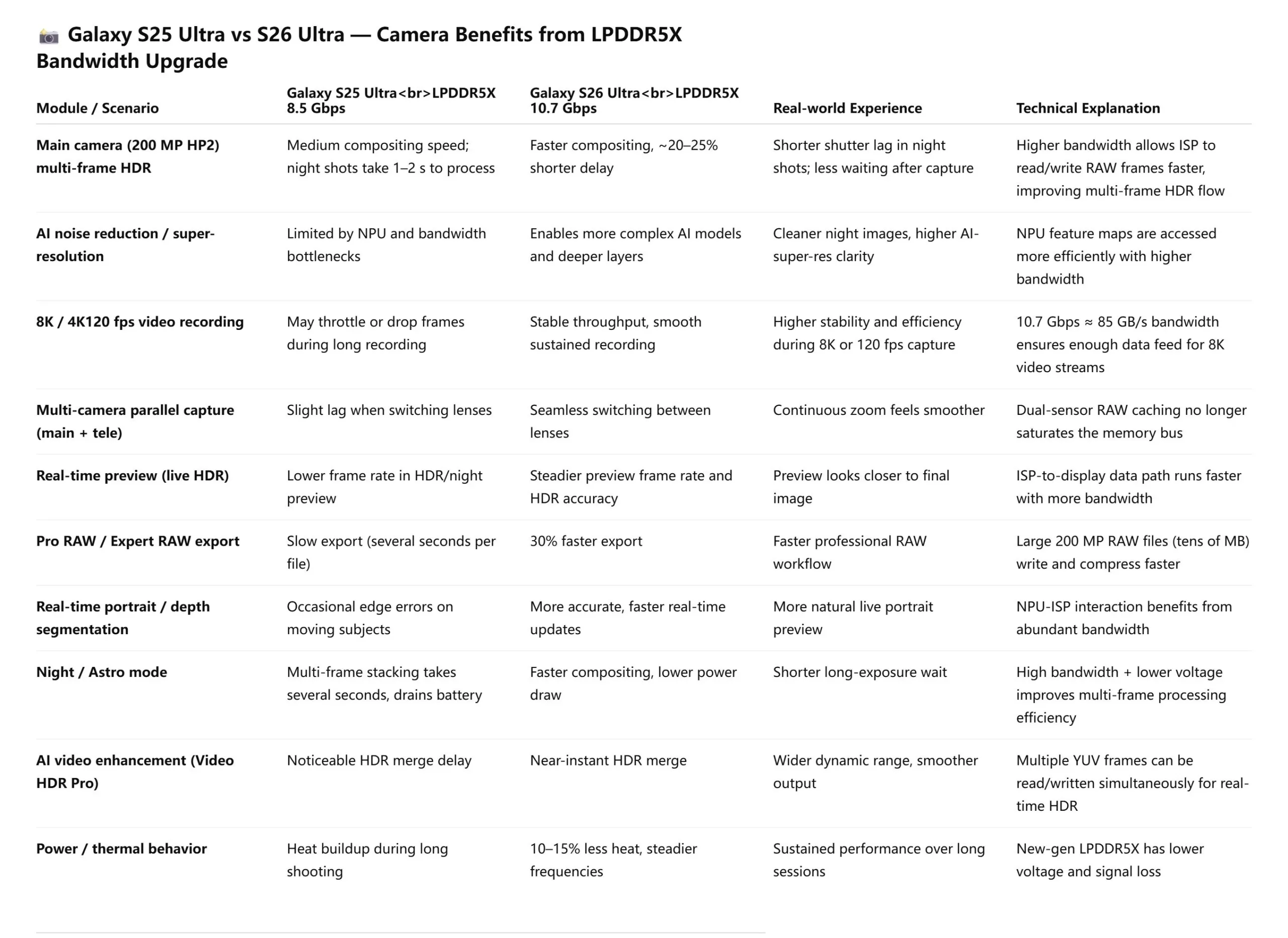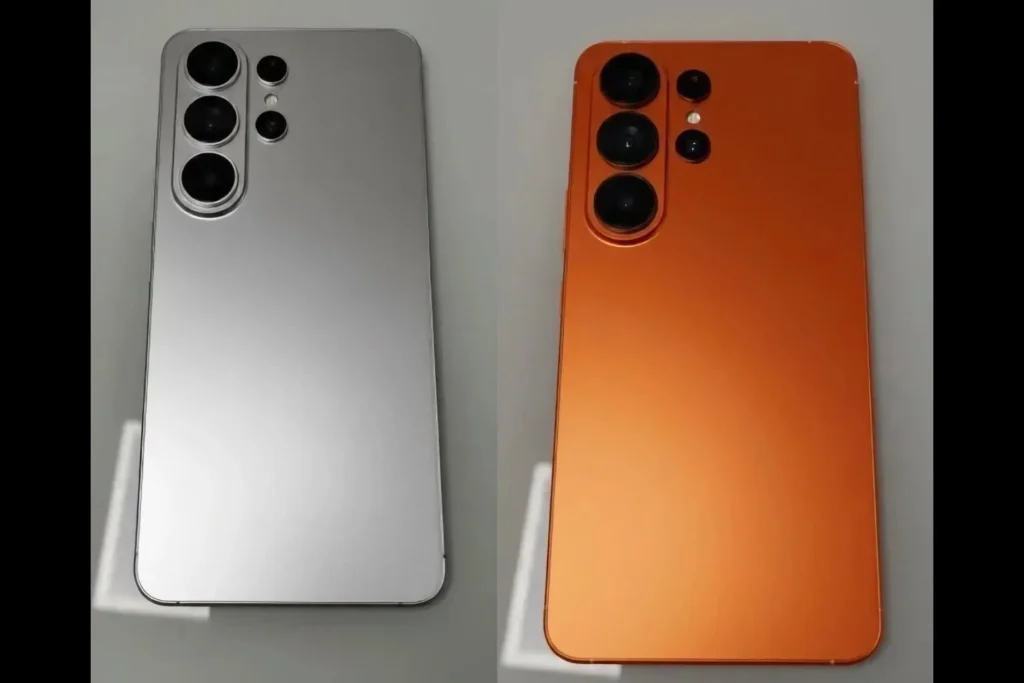Galaxy S26 Ultra: Faster RAM for lag-free, blur-free nighttime shots
According to leaker Ice Universe, Samsung’s Galaxy S26 Ultra will feature a significant technological leap with its LPDDR5X memory, capable of reaching 10.7 gigabits per second (Gb/s).
This enhancement will not only improve overall performance but also have a direct and considerable impact on the smartphone’s photo and video capabilities.
A Faster RAM, A Revolutionary Image Processing
The Galaxy S25 Ultra utilized an older generation of memory that reached 8.5 Gb/s. By exceeding the 10.7 Gb/s mark, the Galaxy S26 Ultra will be able to transfer photo and video data much faster to its image processor.
The outcome is quicker captures, lighter processing, and smoother management of complex AI algorithms.
“The new RAM in the Galaxy S26 Ultra accelerates all stages of the photo pipeline, from triggering to saving the RAW file,” notes Ice Universe.

Galaxy S26 Ultra: Sharper Night Shots Without Delay
Nighttime photos, which usually take longer to process (up to two seconds on the S25 Ultra), will benefit fully from this increased speed. AI models for brightness enhancement will execute more quickly, reducing the risk of motion blur and producing cleaner, more detailed, and better-exposed images.
A Boost for 8K Video and 4K at 120 fps
Thanks to this expanded bandwidth, the Galaxy S26 Ultra will be able to record 8K or 4K videos at 120 frames per second without data loss, avoid stutters during extended captures, and switch lenses instantly while recording.
The data streams from the sensors will be processed continuously, ensuring smooth transitions and more stable HDR rendering.
More Accurate Previews and Accelerated RAW Export
The screen of the Galaxy S26 Ultra will now display more precise previews as image data transfers in real-time.
Exporting RAW files will be up to 30% faster, a significant time saver for photographers who edit their images in post-production.
Astro, HDR, and Portraits Enhanced
The Astro mode (night sky photography) will also see a reduced image fusion time, as will HDR video processing, which is now faster and more accurate. Even the depth blur in portraits will gain realism, thanks to a more precise calculation of distances and contours.
This LPDDR5X memory not only provides increased speed but is also up to 15% more efficient. This will translate into less heating during extended photo or video sessions, better battery life, and reduced throttling (automatic performance drop).
In short, the phone will maintain a constant performance level even during prolonged shoots.
A Crucial Asset Amidst Minimal Hardware Changes
The Galaxy S26 Ultra is expected to incorporate only one new camera sensor compared to its predecessor. In this context, improving the memory becomes a crucial lever for enhancing image quality without hardware redesign.
With RAM operating at 10.7 Gb/s, the new Adaptive Pixel Technology, and an expected speed adjustment feature in the camera, Samsung seems to be betting on software optimisation and computational power to surpass the S25 Ultra.
Even without a hardware revolution, the Galaxy S26 Ultra could signify a major evolution in computational photography. With faster RAM, smoother AI processing, and better stability, Samsung demonstrates that memory performance can now be as impactful for photography as a new sensor.




